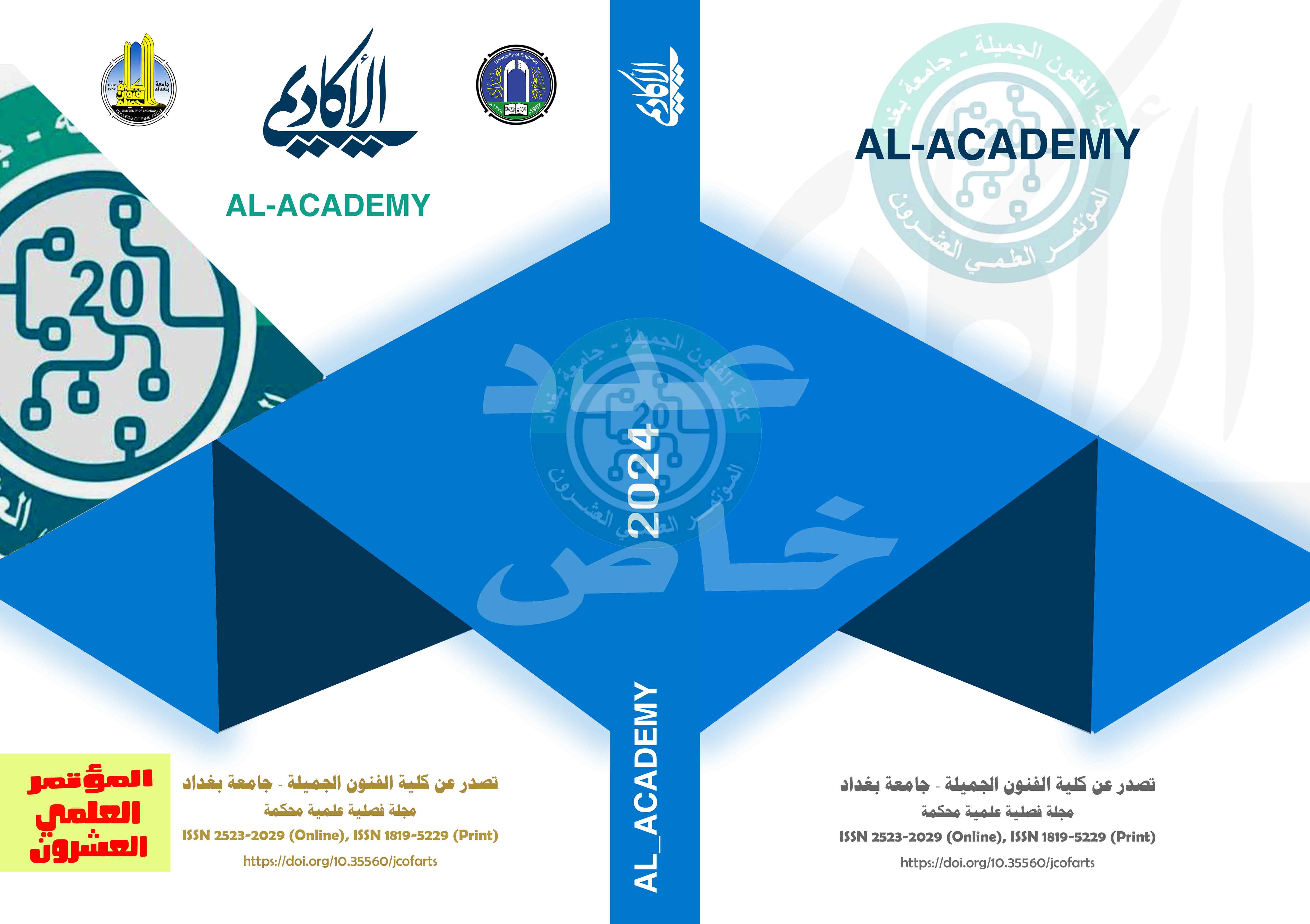Cyborgs...the dialectic of man and machine in contemporary formation
DOI:
https://doi.org/10.35560/jcofarts1445Abstract
The cyborg represents a technological policy based in part on the revolution of social relations in our current era, where the concepts of nature and culture are being reformulated by redefining relationships of polarity and hierarchical dominance, as humans witness for the first time in Its history and its unprecedented qualitative development. This development, accompanied by tremendous technological progress, is a real result. Transhumanism has led to the destruction of every governing principle and definition of the human condition. Therefore, the cyborg is not just the body of a cybernetic living being, but an open system that operates without fixed boundaries. It allows for endless interactions and future transformations. Hard to predict. . Nietzsche, the philosopher of nihilism, could not have imagined that his concept of the superman or the superman, as a being capable of creating his own values and extending them according to the premise of the will to power, had taken a completely different image. His liberation from his biological nature, which had made him an incomplete existence and a weak human being. The biological human being, burdened by disease, epidemics, and death, now yearns for immortality, happiness, and the elimination of old age, with the possibilities provided to him by technology-scientific technology to change his nature through human/machine hybridization, and then modify his ontological status to make it impossible. From a defeated being whose characteristic is weakness and humiliation, to a deified human being who does not know any form of weakness or deficiency, a human being capable of creating his own nature. This new transformation is a new situation that has resulted in a new ideology that has become widely spread in the United States of America, which is called transhumanism and post-humanism. Posthumanisme.. In the eighties of the last century, a new contradiction emerged with the introduction of the computer and artificial intelligence, as the media changed, which affected the role of the artist, who became a programmer, engineer, and scientist, as the transformed culture imposed on the artist an artistic model linked to the transformations and developments of the era
References
Ali, A. (2020). Cyborg is a hybrid creature originally from a human. b.b: Al-Arab Magazine, Issue 117332.
Amhaz, M. (1996). Contemporary artistic currents. Beirut: Publications Distribution and Publishing Company.
Clafel, A. (2019, 3 16). The carnival body. Retrieved from https://alantologia.com/blogs/16438/.
Englisz, D. a. (2007). Sociology of art is ways of seeing. (L. Al-Moussawi, Trans.) Kuwait: The National Council for Culture, Arts and Literature.
François, J. A. (B.t). Man is blown away by technology, from man to beyond. (M. Aslim, Trans.) Fes: Bilal Press.
Habib, M. (2019). Cyborgs...coming digital characters. Baghdad: Al Mada newspaper, issue no. 45504550.
Hauser, A. (1968). Philosophy of art history. (R. Abdo, Trans.) Cairo: Cairo University Press.
Hudson, T. (2001). Dictionary of technical terms. London: Tragatechnig.
Jassam, B. (2004). Art and globalization. Baghdad: College of Fine Arts, University of Baghdad, Al-Academy Journal, Issue 41.
Kaku, M. (2001). Future visions. (M. Younis, Trans.) Kuwait: National Council for Culture and Arts.
Kay, N. (2004). Postmodernism and the performing arts. (N. Saliha, Trans.) Cairo: Egyptian Ministry of Culture.
Kenana, A. N. (2009). Producing and reproducing awareness of the elements of grooming and misinformation. Germany: Camel Publications.
LeBruton, D. (1997). Anthropology of the body and modernity. (M. A. Sasila, Trans.) Beirut: Majd University Foundation for Studies and Publishing.
Muhaibel, O. (2007). From system to self. Algeria: Difference Publications.
Muhammad, B. A. (2006). Studies in art and beauty. Amman: Majdalawi House.
Muller, G. (1988). One hundred years of modern painting. (F. Khalil, Trans.) Baghdad: Dar Al-Mamoun.














